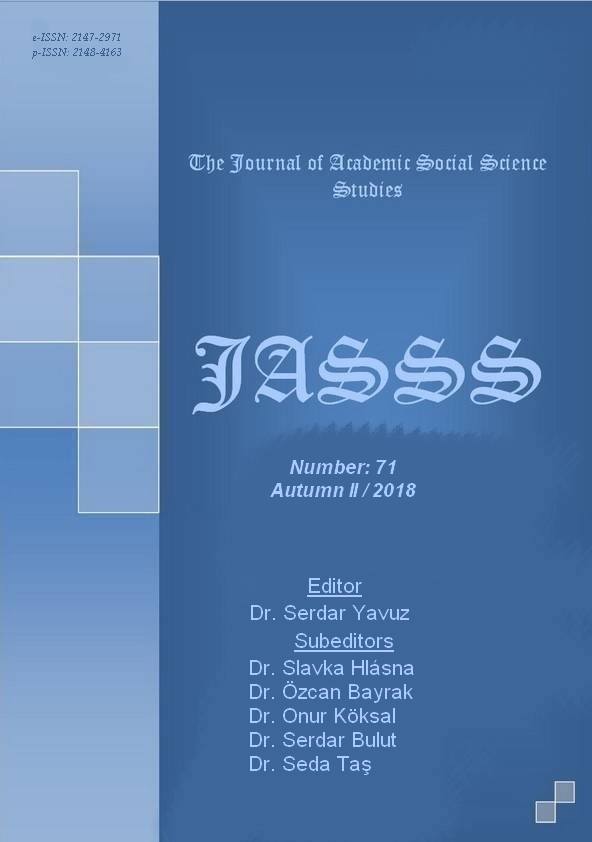Author :
Abstract
XV. yüzyılın ikinci yarısıyla XVI. yüzyılın ilk yarısında yaşayan Ahmed-i Rıdvan; II. Bayezid, Yavuz Sultan Selim ve Kanuni Sultan Süleyman’ın saltanatını görmüş, defterdarlık ve sancak beyliği gibi üst düzey görevlerde bulunmuştur. Şairliğiyle tanınan Rıdvan, hacimli bir Divan’ın yanında İskendernâme, Leylâ vü Mecnûn, Hüsrev ü Şîrîn, Rıdvâniyye, Mahzenü’l-esrâr ve Heft Peyker gibi altı mesnevi kaleme almış ve Bûsîrî’nin Kasîde-i Bürde olarak tanınan el-Kevâkibü’d-dürriye fî medhi hayri’l-beriyye adlı eserini manzum olarak Türkçeye tercüme etmiştir. 1511-1512 yıllarında aruzun fe’ilâtün mefâ’ilün fe’ilün kalıbıyla yazılan Heft Peyker, 4173 beyitten müteşekkil olup iki nüshaya sahiptir. Çift kahramanlı aşk hikâyelerinden farklı bir yol izleyen Heft Peyker, Sasanî hükümdarlarından V. Behrâm’ın tarihî kimliğinden ziyade avlanmaya olan düşkünlüğünden ve önce cariyesi Fitne sonra da yedi iklim padişahlarının yedi kızıyla geçirdiği eğlenceli yaşamından bahsetmektedir. Behrâm, yedi güzel için ayrı ayrı birer köşk yaptırmış, köşklerin her birini ilgili olduğu gezegenin hâkim rengine boyattırmış ve içlerine o renge uygun ülkelerin prenseslerini yerleştirmiştir. Köşklerin rengiyle uyumlu kıyafetler giyerek haftanın her günü farklı bir güzeli ziyaret eden Behrâm, bu kızların her birinden ahlakî mesajlarla dolu hikâyeler dinlemiştir. Şöyle ki yedinci felekteki Zuhal’in etkisi altında olan cumartesi günü siyah köşke, dördüncü felekteki Güneş’in etkisi altında olan pazar günü sarı köşke, birinci felekteki Kamer’in etkisi altında olan pazartesi günü yeşil köşke, beşinci felekteki Mirrih’in etkisi altında olan salı günü kırmızı köşke, ikinci felekteki Utarit’in etkisi altında olan çarşamba günü mavi köşke, altıncı felekteki Müşterî’nin etkisi altında olan perşembe günü sandalî köşke ve üçüncü felekteki Zühre’nin etkisi altında olan cuma günü de beyaz köşke misafir olmuştur. Bu çalışmada Ahmed-i Rıdvan’ın hayatı ve eserleri hakkında kısaca bilgi verildikten sonra mesnevide gazel kullanımına dair bazı açıklamalar yapılacak, Heft Peyker’deki sayı ve renk sembolizmine değinilecek ve mezkur mesnevideki hikâyeler ile ardından söylenen gazellerin tasavvufî ve edebî yorumu üzerinde durulacaktır.
Keywords
Abstract
Ahmed-i Rıdvan, who lived between the latter half of the 15th and the first half of the 16th centuries, had survived long enough to witness the reigns of Sultans Bayezid II, Selim I [Selim the Grim], and Suleiman I [Suleiman the Magnificent]. He moreover had held served various high ranking positions within the Ottoman State, working, for example, as a provincial treasurer and flag officer, as well as was known for his devotion to writing poetry, penning such works as his voluminous Divan, in conjunction with much smaller masnevis such as İskendernâme, Leylâ vü Mecnûn, Hüsrev ü Şîrîn, Rıdvâniyye, Mahzenü’l-esrâr and Heft Peyker. Rıdvan had translated the poet Bûsîrî’s book of verse Kasîde-i Bürde [also known as el-Kevâkibü’d-dürriye fî medhi hayri’l-beriyye] from Arabic into Turkish. Heft Peyker, written between 1511 and 1512 in the fe’ilâtün mefâ’ilün fe’ilün prosodic form, is composed of 4,173 couplets, and has been hand copied twice. It diverges down a different path from traditional hero-centric love stories in that instead of emphasising Behrâm V’s historical identity during the Sassanian Dynasty, the story, rather, talks about his love of hunting, as well as his merry time spent with first with his concubine Fitne, followed by the seven daughters or ‘beauties’ of the seven ‘climate’ gods. Behrâm had built the seven beauties each their own villa, painted each villa with the colour representing their home worlds, and settled them in accordingly. Behrâm would then go around to visit each beauty at her villa once per week, each on a separate week day, dressed accordingly in the matching colour scheme of the villa that he was to go to, upon which each would tell him moral-laden stories. On Saturdays, he would visit Zuhal—under her enchantment—at her black villa on the seventh heaven of paradise, Güneş on Sundays at her yellow/golden villa on the fourth heaven, Kamer on Mondays at her green villa on the first heaven, Mirrih on Tuesdays at her red villa on the fifth heaven, Utarit on Wednesdays at her blue villa on the second heaven, Müşteri on Thursdays at her sandalwood brown villa on the sixth heaven, and (finally) Zühre on Fridays at her white villa on the third heaven of paradise. This paper first briefly highlights the life and works of Amhed-i Rıdvan, and then comments on his writing style as an odist, explores his use of number and colour symbolism in Heft Peyker, as well as interprets both the stories alongside the odes there within from both Sufi mystic and literary angles.





